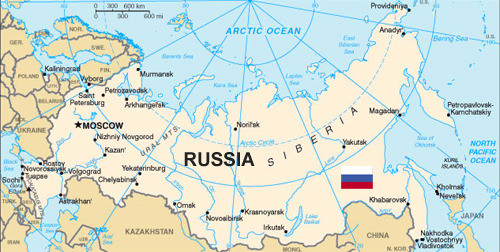Russia’s Cities Becoming Less Moscow- and Russia-Centric, New Studies Find

(Window on Eurasia – Paul Goble – Staunton, December 13, 2014) Two studies about how residents of Russia’s cities feel about where they live and identify themselves suggest that the residents of Russian cities away from the core of the country are ever less focused on Moscow as the center of their lives and identify instead either with their own cities and region or with larger spaces such as Europe.
The first, conducted by Yekaterina Dyba, Yegor Kotov, Anton Gorodnichev and Arina Miksyuk of Moscow’s Higher School of Economics, explored popular attitudes and identities in more than 60 capitals of republics, krays, and oblasts as well as Moscow and St. Petersburg (opec.ru/1772945.html).
The researchers found that “in Russia there are many cities in which people live just as a full a life as in the two capitals” and some in which the human potential index is as higher or higher as in Moscow and St. Petersburg. But one striking characteristic of those cities which are doing well is that they are far from the capitals.
(The human potential index the authors employed involved per capita incomes, demography and health, educational opportunities and attainment, and cost of living relative to income.)
Those nearby often find their lives sucked out of them by the two biggest cities, whereas those from the Middle Volga to the east and from the Black Earth region to the south are more likely to have the urban infrastructure, quality of services, business opportunities, and social capital that make them attractive centers for their populations.
A second study, by Igor Okunyev and Aleksey Domanov of the same institution focused on the extent to which residents of St. Petersburg now identify as Europeans or as Petersburgers rather than as Russians in the first instance and compared their responses with residents in nearby Kronshtadt and Vyborg (opec.ru/1773274.html).
They interviewed 185 people in all. Only about four percent of the respondents in each of the cities chose to identify themselves as Europeans in response to an open-ended question, but 64.5 percent did so when asked directly, “do you consider yourself a European?”
In order to get a better idea about what that identity means, the two researchers also asked about the foreign travel preferences of the residents. Only 31 percent of people in Kronshtadt said they would like to visit Europe, while the corresponding figure was 50 percent in Vyborg and 61.3 percent in St. Petersburg itself, a pattern reflecting history, geography and economics.
Of those in the three cities who said they considered themselves to be Europeans, 61.3 percent purchased Russian products while 87.5 percent bought European ones. But at the same time, the researchers found that those who identified in the first instance as residents of their cities also had a preference for European products relative to Russian ones.
“It is possible,” Domanov, one of the authors of the study, said, “that the more life connects people with Europe abroad, the more they feel themselves separated from Russia and therefore their main identity becomes if not European then local.” But two other correlations are certain.
On the one hand, those with more education are more likely to identify as Europeans. And on the other, those who knew when their city had been absorbed by Russia were also more likely to identify as Europeans than were those who did not know that detail from the past, a pattern that raises intriguing questions about what greater attention to history might lead to.
Article also appeared at http://windowoneurasia2.blogspot.com/2014/12/window-on-eurasia-russias-cities.html
